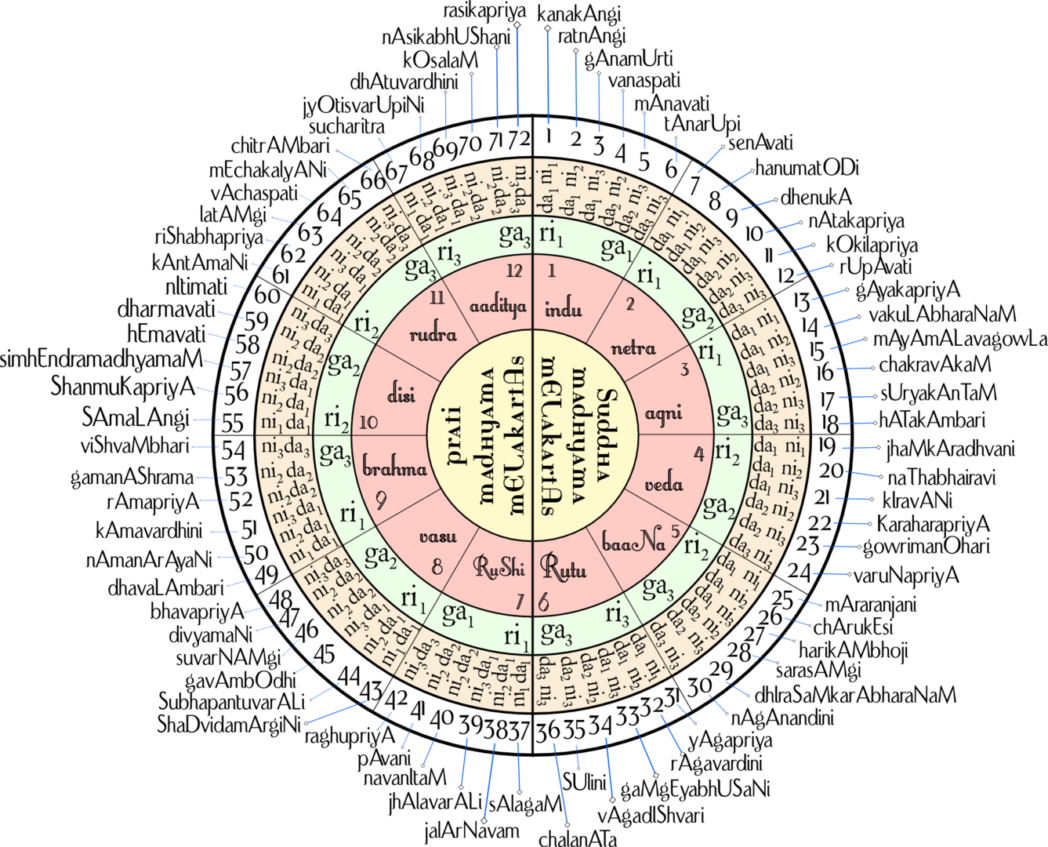Introduction
Indian classical music is renowned for its depth, intricacy, and emotive power. At the heart of this ancient musical tradition lies the concept of ragas, which are intricate melodic frameworks that evoke specific moods and emotions. Ragas serve as the foundation for improvisation and composition in Indian classical music. In this article, we will explore some of the different kinds of ragas that form the backbone of this mesmerizing musical system.

Hindustani Ragas
Hindustani classical music, predominantly practiced in North India, has a vast repertoire of ragas. These ragas are classified into two broad categories: the “thaat” system and the “raga” system.
Thaat System
The thaat system consists of ten major parent scales that form the basis for several ragas. Some of the popular thaats include Bilawal, Bhairav, Kafi, and Kalyan. Each thaat provides a framework of specific ascending (aaroh) and descending (avroh) notes, but it is through the implementation of different ornamentations and melodic phrases that ragas are created.
Raga System
The raga system encompasses numerous ragas, each with its unique structure, melodic movements, and emotional character. Some notable Hindustani ragas include Yaman, Bageshree, Todi, Malkauns, and Bhimpalasi. These ragas exhibit diverse moods, ranging from serene and meditative to passionate and exhilarating.
Carnatic Ragas
Carnatic classical music, primarily practiced in South India, also boasts a wide array of ragas. The Carnatic system classifies ragas into melakarta ragas and janya ragas.
Melakarta Ragas
Melakarta ragas are fundamental ragas that serve as a basis for the creation of other ragas. They follow a systematic arrangement of all seven swaras (musical notes) in both ascending (aarohana) and descending (avarohana) order. The melakarta system comprises 72 ragas, each with its distinct melodic structure.
Janya Ragas
Janya ragas are derived from the melakarta ragas, and they offer an expansive range of melodic possibilities. Each janya raga has its own set of characteristic phrases, ornamentations, and melodic contours. Prominent janya ragas include Mohanam, Kalyani, Thodi, and Shankarabharanam, among others.
Thematic Ragas
Apart from the broader classifications, Indian classical music also features ragas that are associated with specific times of the day, seasons, and emotions. These thematic ragas add a deeper layer of expressiveness to the music, enhancing the overall experience for both performers and listeners.
Time-based Ragas
Ragas such as Bhairavi (morning), Malkauns (midnight), and Darbari Kanada (late evening) are associated with specific times of the day. These ragas capture the essence and mood of the particular time and are often performed during their designated periods to enhance the emotional impact.
Seasonal Ragas
Ragas like Megh Malhar (monsoon), Basant (spring), and Hemant (winter) are associated with specific seasons. These ragas evoke the beauty and characteristics of the respective seasons, enabling artists to create captivating musical narratives.
Emotion-based Ragas
Some ragas are renowned for evoking specific emotions. For example, Raga Bhairavi is often associated with devotion and tranquility, while Raga Hamsadhwani is known for its playful and joyous character. These ragas provide a direct connection between the music and the emotions it seeks to convey.
Conclusion
The Indian classical music system is a treasure trove of ragas, each with its unique melodic structure, emotional palette, and artistic possibilities. From the serene melodies of Yaman to the complex improvisations of Todi, these ragas form the foundation of a vast musical landscape that has captivated listeners for centuries. Exploring the rich and diverse world of ragas in Indian classical music is an immersive journey that allows us to appreciate the profound depth and beauty of this ancient musical tradition.
